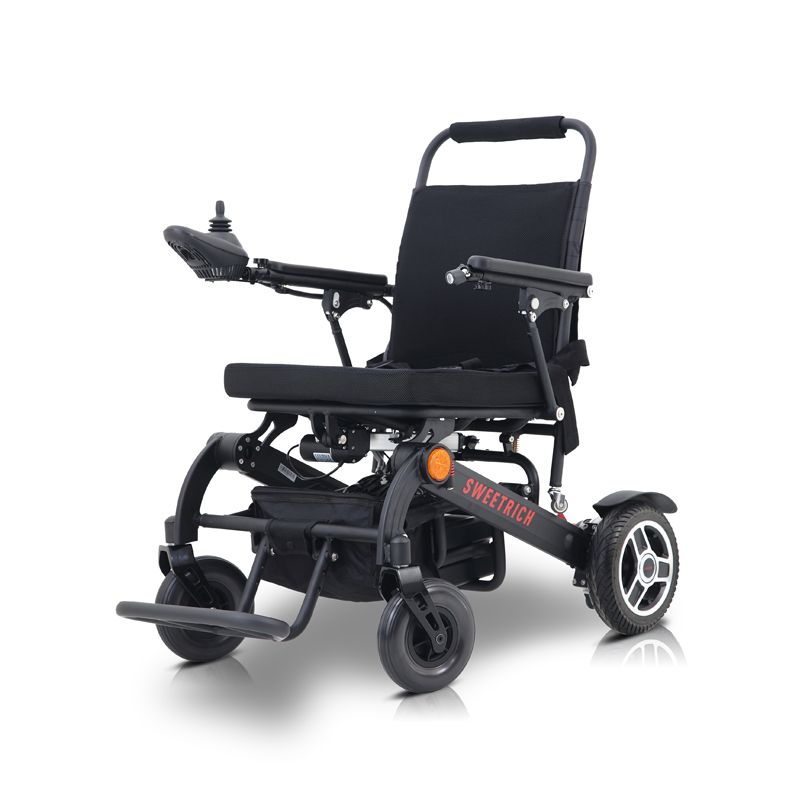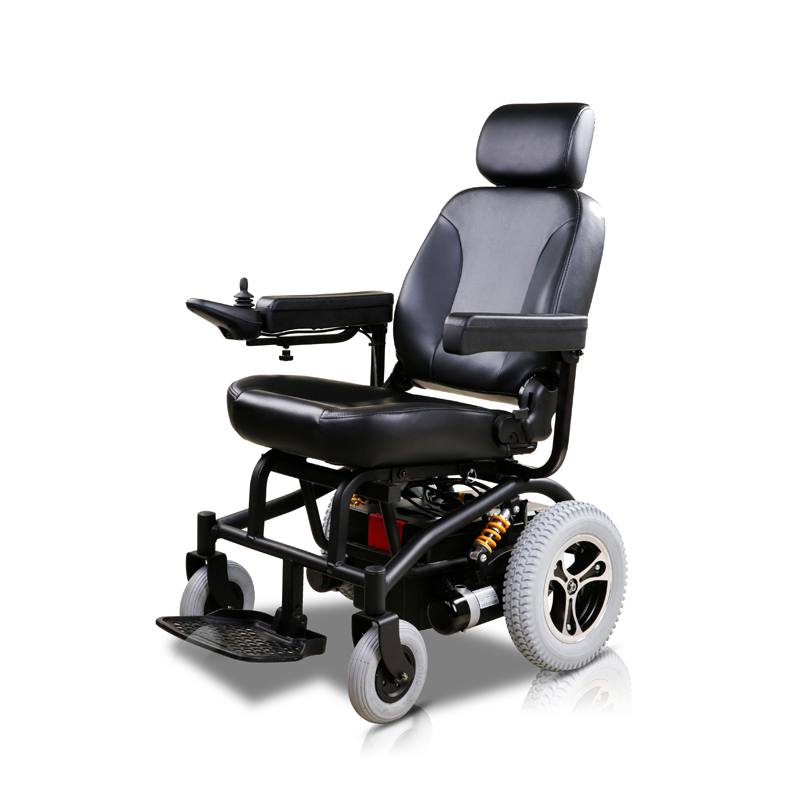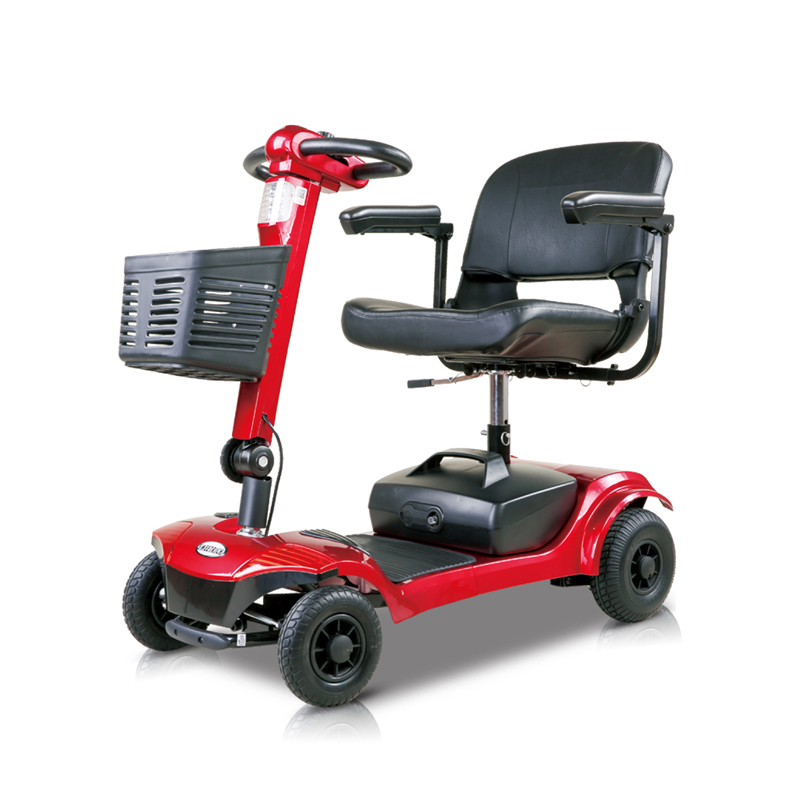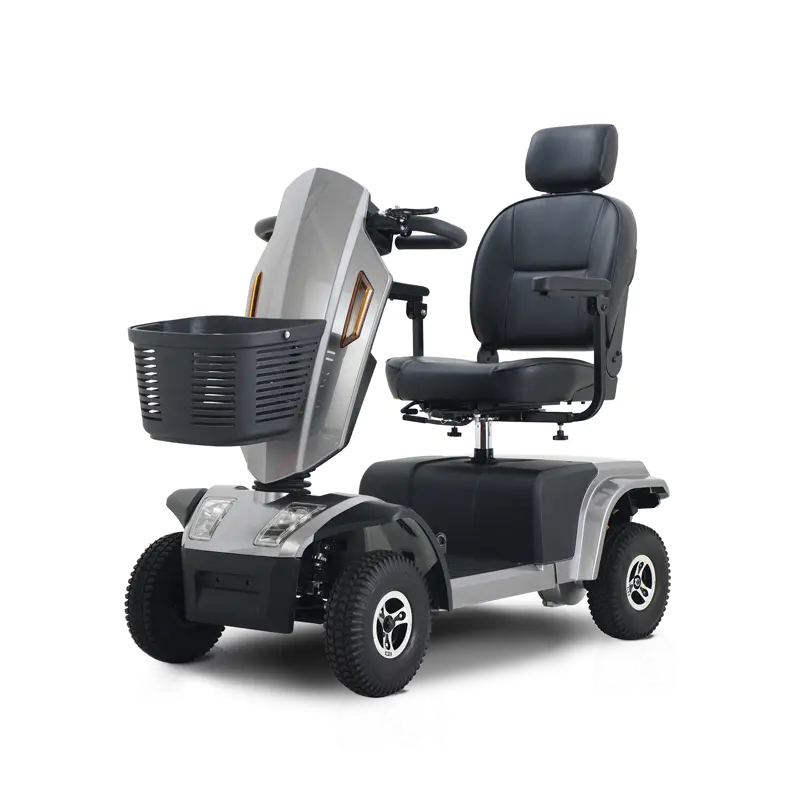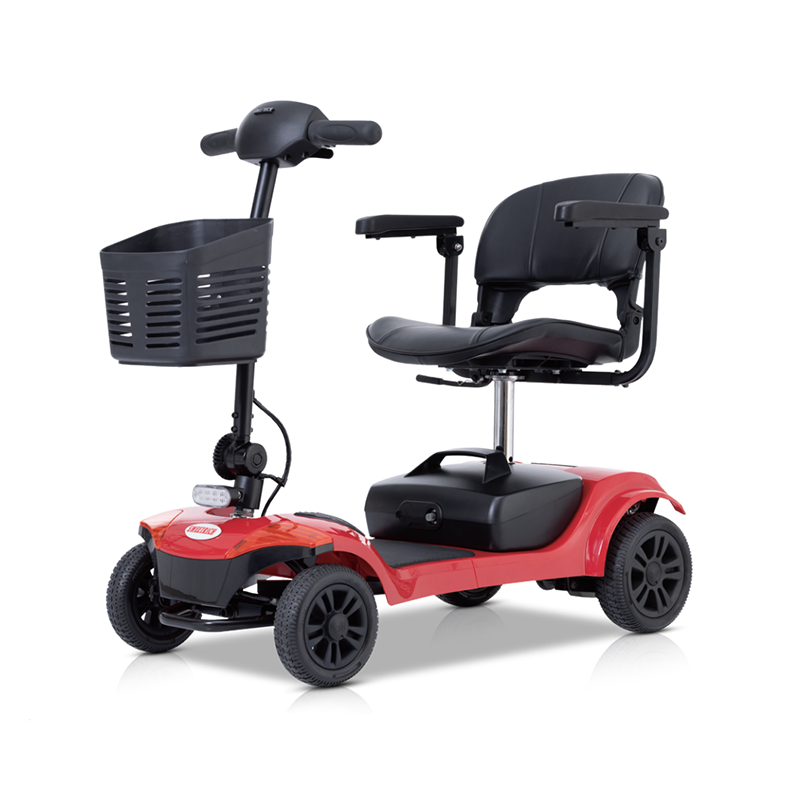The Evolution of Urban Mobility and the Rise of Portable Scooters
Urban transportation has undergone a remarkable transformation over the past decade, with portable scooters emerging as one of the most significant developments in personal mobility. The convergence of technological innovation, environmental consciousness, and changing urban landscapes has created the perfect environment for these compact vehicles to flourish. Unlike their predecessors, today's portable scooters represent a sophisticated blend of engineering excellence and practical design, offering solutions to some of the most persistent challenges faced by commuters worldwide.
The modern portable scooter represents more than just a convenient way to travel short distances—it embodies a shift toward sustainable urban living and personalized transportation. As cities become more congested and environmental concerns grow, these nimble vehicles provide an attractive alternative to traditional transportation methods. Their compact nature addresses the last-mile problem that has long plagued public transportation systems, while their electric versions contribute to reducing urban pollution levels. The current generation of portable scooters has evolved from simple recreational devices to serious transportation tools capable of meeting the diverse needs of modern commuters.
What truly sets the new wave of portable scooters apart is their integration of advanced technologies that were previously available only in premium transportation options. From sophisticated battery management systems to innovative safety features and smart connectivity, these scooters have become increasingly sophisticated while maintaining their fundamental advantage of portability. This technological democratization has made high-quality personal transportation accessible to a broader audience, fundamentally changing how people perceive and utilize scooters for their daily commuting needs.
Unlocking the Perfect Ride: Five Key Considerations for Your Next Portable Scooter
Understanding Your Performance and Portability Needs
When evaluating portable scooters, performance and portability represent two critical factors that often exist in tension with each other. Riders must carefully balance their need for speed and power against the practical reality of transporting and storing their scooter. The engineering challenge of creating a vehicle that is both powerful enough for practical commuting and lightweight enough for true portability has driven remarkable innovations in materials science and mechanical design across the industry.
Performance considerations extend beyond simple maximum speed metrics. Modern riders should evaluate acceleration characteristics, hill-climbing capability, and stability at various speeds. Simultaneously, portability encompasses not just weight but also folding mechanism efficiency, collapsed dimensions, and carrying comfort. The intersection of these factors creates a complex decision matrix that varies significantly based on individual use cases and physical capabilities of the rider.
Crucial Performance Metrics Versus Portability Factors
The table below illustrates how different performance characteristics typically correlate with portability features, helping riders understand the inherent trade-offs in scooter selection:
| Performance Characteristic | Impact on Portability | Consideration for Different Users |
|---|---|---|
| Motor Power and Torque | Higher power typically requires heavier motors and larger batteries, increasing overall weight | Commuter with hills may prioritize power over minimal weight |
| Battery Capacity and Range | Extended range necessitates larger batteries, directly affecting weight and dimensions | Users with longer commutes should balance range needs with carry distance |
| Suspension System Quality | Advanced suspension adds weight but improves ride quality on varied terrain | Urban riders on smooth pavement may sacrifice suspension for lighter weight |
| Frame Material and Construction | Lightweight alloys reduce weight but may impact durability and cost | Frequent travelers benefit from advanced materials despite higher cost |
| Wheel Size and Type | Larger wheels improve stability but increase folded dimensions | Riders navigating rough terrain should prioritize wheel size over compact folding |
This interplay between performance and portability means there is no universally "perfect" scooter—only the ideal scooter for a particular individual's specific needs and circumstances. The market has responded to this complexity by developing specialized models that optimize for different points along the performance-portability spectrum, giving consumers an unprecedented range of options to match their unique requirements.
best portable scooter for commuting: Features That Truly Matter
Identifying the best portable scooter for commuting requires a meticulous examination of features that directly impact the daily travel experience. While many manufacturers emphasize specifications that look impressive on paper, the reality of commuting introduces practical considerations that often outweigh raw performance numbers. The ideal commuter scooter must excel across multiple dimensions while maintaining the portability that makes scooters uniquely suited for mixed-mode transportation.
Durability stands as perhaps the most overlooked yet critical characteristic of an excellent commuter scooter. Unlike recreational use, commuting subjects a scooter to consistent, daily wear across varying conditions. A scooter destined for commuting duties should demonstrate robust construction with particular attention to components that experience the most stress:
- Stem and Folding Mechanism: These critical components must maintain rigidity while enduring thousands of folding cycles and road vibrations. Look for designs with minimal play and proven reliability.
- Wheel Bearings and Axles: Quality bearings significantly impact rolling efficiency and longevity, especially important for maintaining range over time.
- Water Resistance: While few scooters are fully waterproof, legitimate IP ratings for water resistance provide essential protection against puddles and unexpected rain.
- Deck Construction: The platform must withstand constant weight and foot movement without developing stress fractures or excessive flex.
Beyond durability, the practical ergonomics of commuting deserve careful consideration. The daily commuter interacts with their scooter during folding, carrying, and storage—actions that happen multiple times each day. A scooter that is technically portable but awkward to handle quickly becomes a burden. Key ergonomic factors include:
- Balanced weight distribution when folded and carried
- Minimal pinching points in the folding mechanism
- Integrated carrying handles or balanced folding that allows comfortable transport
- Stability when folded and leaned against surfaces
Finally, the best portable scooter for commuting must offer predictable performance that aligns with real-world commuting conditions. While maximum speed attracts attention, most commuters operate within legal limits that prioritize safety over outright velocity. More relevant performance metrics include acceleration from stoplights, hill-climbing capability on specific routes, and range at typical commuting speeds rather than ideal laboratory conditions. The scooter's controls should be intuitive, allowing the rider to focus on traffic rather than operating complexity, and safety features like lighting and braking must perform reliably in various weather conditions.
lightweight foldable electric scooter options: Comparing Materials and Mechanisms
The pursuit of the ideal lightweight foldable electric scooter options has driven innovation in materials science and mechanical engineering, resulting in increasingly sophisticated designs that challenge traditional weight-to-strength ratios. Understanding the materials and folding mechanisms available provides essential insight for selecting a scooter that balances durability with the portability that makes these vehicles so appealing for urban mobility.
Frame materials represent the most significant factor in both weight and durability. The evolution from basic steel frames to advanced alloys and composites has dramatically transformed what's possible in scooter design:
- Aluminum Alloys: The most common material for quality lightweight scooters, offering an excellent balance of strength, weight, and cost. Aerospace-grade aluminum provides superior characteristics for demanding applications.
- Carbon Fiber Composites:
- Advantages: Exceptional strength-to-weight ratio, vibration damping properties, and design flexibility.
- Considerations: Higher cost, potential vulnerability to impact damage, and complex repair requirements.
- Magnesium Alloys:
- Advantages: Lighter than aluminum with good strength characteristics and excellent vibration absorption.
- Considerations: Higher production costs and potential corrosion issues without proper treatment.
- Advanced Steel Alloys:
- Advantages: Superior durability and impact resistance, often at lower cost.
- Considerations: Significantly heavier than alternative materials, limiting portability.
Folding mechanisms represent another critical area of differentiation among lightweight foldable electric scooter options. The mechanism must provide secure locking during operation while enabling quick, reliable folding and unfolding. Common approaches include:
| Mechanism Type | Key Characteristics | Weight Consideration | Durability Factors |
|---|---|---|---|
| Latch-based Folding | Simple operation, often with a single lever release | Minimal mechanism weight | Latch mechanisms may wear over time, requiring adjustment |
| Magnetic Locking | Smooth operation with positive engagement feedback | Slightly heavier due to magnet components | Minimal mechanical wear, but magnetic strength must be maintained |
| Twist or Rotational Locking | Often incorporates quick-release style mechanisms | Moderate mechanism weight | Threads or locking surfaces may require maintenance |
| Hybrid Systems | Combines multiple locking methods for security | Typically heaviest due to redundant components | Highest reliability through redundancy |
The intersection of materials and mechanisms creates the actual user experience of a portable scooter. A scooter with an advanced carbon fiber frame but a poorly designed folding mechanism fails its fundamental purpose, just as a robust folding system on an excessively heavy frame undermines portability. The best lightweight foldable electric scooter options demonstrate thoughtful integration of these elements, resulting in a product that feels cohesive and purpose-built rather than a collection of compromises.
portable scooter with long battery life: Beyond the Specification Sheet
The pursuit of a portable scooter with long battery life requires looking beyond manufacturer claims and understanding the real-world factors that determine how far a scooter can actually travel on a single charge. Battery technology has advanced significantly, but the stated range often reflects ideal conditions that rarely match actual usage patterns. Discerning buyers must develop a nuanced understanding of battery performance that considers chemistry, management systems, and practical riding variables.
Battery chemistry fundamentally influences performance characteristics, with different technologies offering distinct advantages and limitations:
- Lithium-ion (Li-ion):
- Most common in quality scooters due to good energy density and cycle life
- Requires careful management to prevent damage from overcharging or deep discharge
- Performance gradually degrades over time, with typical lifespan of 2-5 years depending on usage
- Lithium Polymer (LiPo):
- Can be formed into various shapes, allowing flexible packaging
- Generally higher energy density than traditional Li-ion
- Requires more careful handling as they are more vulnerable to physical damage
- Lithium Iron Phosphate (LiFePO4):
- Superior cycle life and thermal stability
- Heavier and less energy-dense than other lithium options
- Maintains voltage better throughout discharge cycle
The Battery Management System (BMS) represents the intelligence behind modern scooter batteries, performing critical functions that directly impact both performance and safety. A sophisticated BMS provides:
- Cell balancing to ensure uniform charge and discharge across all cells
- Thermal monitoring to prevent overheating during charging and operation
- Current limiting to protect against excessive draw that can damage cells
- State of charge calculation that provides accurate range estimation
- Protection against over-discharge, which permanently damages lithium batteries
Real-world range depends heavily on riding conditions and habits. The table below illustrates how various factors typically impact the achievable range of a portable scooter with long battery life:
| Factor | Impact on Range | Typical Range Reduction |
|---|---|---|
| Rider Weight | Higher weight increases energy required for acceleration and hill climbing | 1% reduction per 5kg over reference weight |
| Terrain and Elevation Changes | Hills significantly increase energy consumption | 20-40% reduction in hilly areas versus flat terrain |
| Riding Speed | Air resistance increases exponentially with speed | 15-25% reduction at maximum speed versus economical pace |
| Temperature | Cold weather reduces battery efficiency and capacity | 10-20% reduction in freezing temperatures |
| Tire Pressure | Under-inflated tires increase rolling resistance | 5-15% reduction with significantly under-inflated tires |
Selecting a portable scooter with long battery life ultimately requires aligning manufacturer specifications with personal use patterns. A scooter with a smaller battery may provide adequate range for a lightweight rider on flat terrain, while the same model would prove insufficient for a heavier rider navigating hills. Understanding these variables enables buyers to make informed decisions rather than relying solely on maximum range figures that rarely reflect real-world conditions.
adult portable scooter safety features: Beyond the Basics
When evaluating adult portable scooter safety features, it's essential to look beyond the basic lighting and braking systems that manufacturers typically highlight. True safety in personal transportation devices encompasses multiple layers of protection, including active systems that help prevent accidents, passive features that protect during incidents, and structural elements that ensure reliability under stress. For adults using scooters as serious transportation rather than recreation, these advanced safety considerations become non-negotiable requirements.
Braking systems represent the most critical safety component, with various technologies offering different performance characteristics. Modern portable scooters typically employ one or more of these braking methods:
- Electronic Regenerative Braking:
- Uses the motor as a generator to slow the scooter while recovering some energy
- Provides smooth braking without mechanical wear
- Effectiveness decreases as battery approaches full charge
- Works best in combination with mechanical brakes
- Disc Brakes:
- Offer strong, consistent braking performance in various conditions
- Require periodic maintenance but provide reliable stopping power
- Hydraulic versions provide superior modulation and power with minimal hand pressure
- Drum Brakes:
- Enclosed design protects from elements, requiring less frequent maintenance
- Generally less powerful than disc brakes but more consistent in wet conditions
- Often found on rear wheels where extreme braking power is less critical
- Foot Brakes:
- Simple mechanical system that presses against the rear tire
- No maintenance required beyond occasional pad replacement
- Limited stopping power, especially in wet conditions
Lighting and visibility systems constitute another crucial safety category, particularly for commuters who may ride in low-light conditions. Beyond basic front and rear lights, advanced visibility features include:
| Feature Type | Safety Benefit | Implementation Considerations |
|---|---|---|
| Automatic Lighting Systems | Ensures lights are always active when needed without rider intervention | Light sensors must be positioned to detect changing conditions accurately |
| Side Lighting and Reflectors | Makes the scooter visible from intersections and perpendicular angles | Should provide 360-degree visibility when combined with front/rear lighting |
| Brake-activated Lighting | Alerts following traffic when decelerating, preventing rear-end collisions | Should include additional high-intensity LEDs when brakes are applied |
| Turn Signal Indicators | Communicates rider intentions to other road users | Should be clearly visible from front, rear, and side angles |
Structural integrity and stability features form the third pillar of comprehensive adult portable scooter safety features. These often-overlooked elements contribute significantly to accident prevention through enhanced control and predictability:
- Wheel Size and Composition: Larger wheels (8+ inches) navigate obstacles more safely than smaller wheels, while air-filled tires provide better shock absorption and traction compared to solid alternatives.
- Deck Texture and Dimensions: A sufficiently wide deck with non-slip surface allows secure footing in various conditions, while excessive deck height raises the center of gravity, compromising stability.
- Stem Rigidity and Weld Quality:
- Minimal stem flex ensures predictable handling, especially during braking and cornering
- Quality welds throughout the frame prevent catastrophic failures under stress
- Regular inspection of folding mechanisms and stress points is essential for long-term safety
- Center of Gravity Optimization: Proper weight distribution between front and rear wheels affects stability during acceleration and braking, with poorly balanced scooters being prone to wheel lift or loss of traction.
When properly implemented, these advanced adult portable scooter safety features work together to create a protective system that addresses the unique risks of personal electric transportation. Rather than treating safety as an afterthought, the best scooters integrate these considerations throughout the design process, resulting in vehicles that inspire confidence across the wide range of conditions encountered in daily use.
compact scooter for urban travel: Navigating the Concrete Jungle
The unique demands of city environments make selecting the ideal compact scooter for urban travel a specialized decision with distinct considerations beyond general portability. Urban riders face a specific set of challenges including limited storage space, heterogeneous terrain, dense traffic patterns, and frequently changing regulations. Understanding how different scooter characteristics perform in this context enables city dwellers to select vehicles that genuinely enhance their mobility rather than creating additional complications.
Maneuverability in tight spaces represents perhaps the most valuable characteristic of an urban scooter. The combination of physical dimensions, turning radius, and responsive handling determines how effectively a scooter navigates crowded sidewalks (where permitted), bike lanes, and vehicle traffic. Key factors influencing urban maneuverability include:
- Deck Width and Length: A narrower deck allows filtering through tighter spaces but may compromise stability and foot comfort during longer rides.
- Wheelbase: Shorter wheelbases improve maneuverability at low speeds but can reduce stability at higher velocities.
- Handlebar Width: Narrower handlebars prevent collisions with obstacles but may affect steering leverage and control.
- Turning Radius: The physical space required to execute a U-turn determines practicality in confined urban environments.
Urban terrain presents unique challenges that differ significantly from the smooth surfaces assumed in many scooter specifications. City riders regularly encounter:
| Urban Terrain Feature | Impact on Scooter Requirements | Ideal Scooter Characteristics |
|---|---|---|
| Uneven Pavement and Potholes | Creates vibration and impact stresses | Suspension system, larger air-filled tires, robust construction |
| Curbs and Single Steps | Requires occasional lifting and curb climbing | Lightweight design, integrated carrying points, moderate weight |
| Wet Surfaces and Metal Grates | Reduces traction significantly | Quality tire compounds, appropriate tread patterns, stability control |
| Crowded Shared Spaces | Demands precise low-speed control | Responsive throttle modulation, intuitive controls, smooth power delivery |
The practical reality of multimodal transportation further defines the ideal compact scooter for urban travel. City dwellers frequently combine scooters with public transportation, requiring seamless transitions between modes. This usage pattern emphasizes specific characteristics:
- Folding Speed and Simplicity: The ability to quickly fold and unfold the scooter with minimal effort makes public transportation integration practical, especially during rush hours.
- Folded Dimensions: The collapsed scooter should fit comfortably in designated storage areas on buses and trains without obstructing aisles or inconveniencing other passengers.
- Standing Stability When Folded: The ability to stand upright without support prevents the scooter from falling over in moving vehicles and reduces handling during crowded conditions.
- Cleanliness and Projection: Designs that prevent road grime from transferring to clothing and bags maintain practicality for mixed indoor/outdoor use.
Finally, urban environments introduce specific security considerations that differ from suburban or recreational use. The compact nature of a scooter makes it vulnerable to theft, while the frequent need to briefly leave it unattended (at coffee shops, during quick errands) demands practical security solutions. The ideal compact scooter for urban travel incorporates thoughtful security features such as integrated locking points, tracking capability, and visual distinctiveness that aids recovery. These urban-specific considerations transform a generic portable scooter into a genuine mobility solution tailored to the complex realities of city life.
Making Your Decision: Integrating Key Factors for the Ideal Portable Scooter
Selecting the perfect portable scooter requires synthesizing the various considerations discussed throughout this article into a coherent decision-making framework. Rather than focusing on isolated specifications, prospective buyers should develop a holistic understanding of how different features interact to create a riding experience that aligns with their specific needs, physical capabilities, and usage patterns. This integrated approach prevents the common pitfall of overemphasizing a single impressive specification while overlooking critical deficiencies in other areas.
The decision process should begin with honest self-assessment regarding primary use cases, physical constraints, and environmental factors. A scooter that excels for a lightweight student navigating a flat campus may prove inadequate for a commuter facing hills, longer distances, and variable weather conditions. Similarly, a scooter with exceptional performance characteristics becomes impractical if its weight exceeds what the rider can comfortably carry up stairs or onto public transportation. This foundational understanding creates filtering criteria that narrow the field to scooters genuinely suited to individual circumstances rather than marketing claims.
Budget considerations must extend beyond the initial purchase price to encompass the total cost of ownership, including:
- Maintenance requirements and associated costs
- Battery replacement timeline and expense
- Availability and cost of replacement parts
- Potential repair complexities
- Resale value and product support longevity
Finally, the integration of all factors—performance, portability, safety, urban practicality, and long-term ownership costs—creates a personalized scoring system that leads to an optimal decision. By weighting each category according to individual priorities and evaluating how specific scooter models address these needs, buyers can move beyond subjective impressions to a methodical selection process. This approach ensures that the chosen portable scooter becomes a valuable mobility tool rather than a disappointing compromise, delivering the freedom and convenience that make portable scooters such a transformative development in personal transportation.


